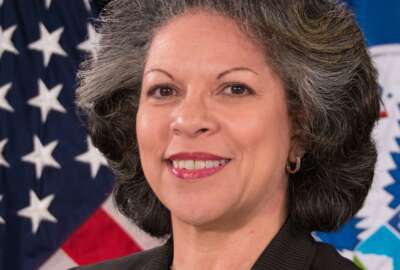

Homeland Security, Veterans Affairs, EPA and GSA procurement leaders shared how they're making frictionless acquisition a reality.
Years of criticism directed at federal agencies has created a culture of risk aversion. That’s something which Soraya Correa, Department of Homeland Security chief procurement officer, said needs to change.
“We’ve got to allow people to do things differently, to try new [things], and so take those chances,” she said Tuesday. “And we the leadership in this profession and across all the professions need to support our people a little bit better to make them feel that confidence that they can take some calculated risks and move the ball forward.”
Correa was part of the Accelerating Acquisition in the Dynamic Workplace webinar, sponsored by FedInsider, which gathered agency acquisition leaders to talk about inefficiencies in federal procurement and what they would like to be done differently.
One of Correa’s initiatives, DHS’ Procurement Innovation Lab, has set an example of creating “safe spaces” for innovation. Its PIL boot camp has proved popular with other agencies and DHS and its components have awarded a cumulative 52 PIL procurement projects from fiscal 2015, when the lab started, to 2019, according to the agency.
Several speakers referenced the Contractor Performance Assessment Reporting Systems (CPARS), an electronic workflow that reports and rates contractor performance, at the General Services Administration. Correa said DHS is championing artificial intelligence to track past performance with CPARS data, but the system is “daunting.”
“It’s not an easy system to use. There’s a lot of data,” she said. “And if we could find a way to use AI to identify relevant past performance records quicker and more effectively, we can reduce the administrative workload and increase the quality of the outcome because we can learn more about the companies that we’re looking to work with, what they’ve done that is relevant and consistent with what we’re buying, what perhaps their past performance profile looks like at a particular agency or across the federal government, or in a particular area or body of work.”
That’s why DHS is using the Commercial Solutions Opening pilot, through which it picked nine vendors to come up with ideas to build a commercial tool to achieve this goal. Now in their second phase with seven agencies participating, Correa said organizations have volunteered funding and some people are providing data for testing purposes.
“We have individuals, contracting officers and contract specialists and people who use the system who have helped us test out our initiative,” she said.
VA’s Executive Director of the Office of Acquisition and Logistics Angela Billups said her agency is also looking for more ways to document vendor certifications electronically. She said emerging technology is the only way VA can keep up with the pace of regulatory changes to legislation, supply chain risk management and the like.
“We are ready right now at the VA to implement a market research bot that we’re using. Once we pilot that we will present that to [the Office of Federal Procurement Policy] so others can look at that,” she said.
For Jeffrey Koses, senior procurement executive at the General Services Administration, in the short term that could mean updating certification programs. He pointed out the 2019 National Defense Authorization Act gave the Defense Department authority to rethink the federal acquisition certification programs in terms of expertise. This released DoD from some of the statutory requirements on hiring, which can modernize the workforce’s skill set
“To have the freedom to hire some of the incredibly talented people who sit on the other side of the table from us, to be able to rethink some of the certification programs, the requirements, and modernize the skill mix that we’re trying to hire … would let us do some amazing things,” he said.
Meanwhile, at the Environmental Protection Agency, frictionless acquisition started with reorganizing the people already there. Kimberly Yvonne Patrick, EPA senior procurement executive, said that after a reorganization a few years ago she changed her group’s name from the Office of Acquisition Management to Acquisition Solutions, “because I want them to focus on the fact that it’s their job to deliver solutions to our customers.”
“When I first came in, we were looking at a backlog of actions — about 570 procurement actions that had not been touched or were beyond our standards. And we underwent a process of continuous process improvement,” she said.
Now the backlog has fewer than 90 actions, she said.
Copyright © 2025 Federal News Network. All rights reserved. This website is not intended for users located within the European Economic Area.
Amelia Brust is a digital editor at Federal News Network.
Follow @abrustWFED



